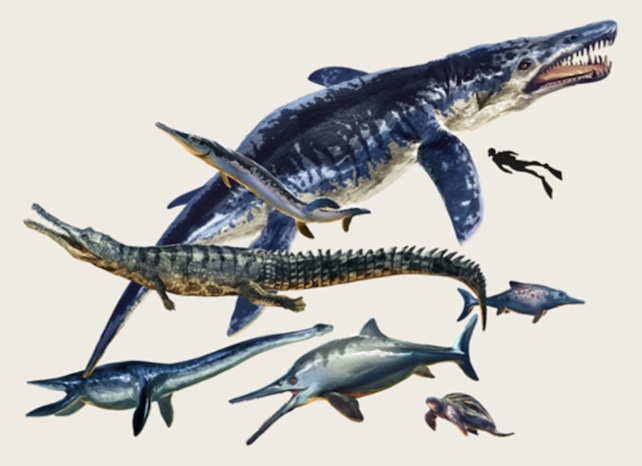Biodiversity flourished in the early chalk period, and not only among dinosaurs. The oceans also knew about life, including some monstrous predators in contrast to everything that lives today.
In a new study, researchers dive deep into one intriguing ecosystem from the early chalk, where marine reptiles of bus length such as pliosaurs lottery tickets dive on other large carnivores, which formed a rare seventh trophic level in their food web.
Modern oceans, in comparison, maximum on trophic level five or six, represented by top predators such as orcas, sperm whales and large white sharks.
A trophic level indicates a position within a food web, with lower levels that mean species closer to the soil. Level one contains primary producers such as algae and plants, while level includes two primary consumers such as herbivores.
Level three is for Carnivoren who eat herbivores, known as secondary consumers, and are higher levels for carnivores that hunt fellow carnivores.
The new study focuses on old residents of the Pyja formation, an early chalkgeological formation in present-day Colombia. The sea level was higher at the time and a large part of the area was covered by a warm, shallow sea.
That sea apparently brought with life at all trophic levels, the authors of the study, part of a broader increase in biodiversity during chalk, largely driven by warm climates and the constant fracture of the supercontinent Pangea.
It requires a diverse, healthy ecosystem to support top predators at a high level, and the liveliness of this prehistoric sea could evolve a number of incredible Leviathans.
The pyja ecosystem was the home base of massive dolphin-like reptiles known as ichthyosaurs, crocodile animals called teleosaurs and long neck pliosaurs, some more than 10 meters long.
The potential for a seventh trophic level illustrates how rich and complicated the Paja ecosystem must have been 130 million years ago, the authors of the study say.
To shed light on this old Habitat, the researchers have rebuilt his ecosystem network – a model of interactions between species within an ecosystem – with the help of data from all known animal fossils found in the Pyja formation.
They have in important details in important sizes such as the body sizes of the fossilized animals and food adjustments, and used wild analogues in the wild to help them distract some non -born information.
This approach was mainly used to study the current ecosystems, the authors point out, but there is a recent trend to apply them to fossil data.

The researchers got inspiration from an existing network for marine ecosystem based on contemporary Caribbean ecosystems, they write and used this reference model to help them test and refine their PAJA network.
When it was ready, their network offered an unprecedented look at one of the lively marine food webs that are known to science, the authors say.
“Our study is the first to investigate these possible ecological interactions,” says biologist Dirley Cortés at the University of McGill.
And although that is interesting in itself, it also informs our broader understanding of ecology, both old and modern, she adds.
“Insight into this complexity helps us to trace how ecosystems evolve over time,” says Cortés, “shed light on the structures that support today’s biodiversity.”
The Paja formation has become known for its impressive marine reptiles, cortés and her colleagues point it out, but it is unlikely that those APEX predators may have evolved without a robust food web to support them.
Relatively little is known about the broad paleo -ecological structure of the habitat, the researchers, including the many fish, ammonites and other important beings of lower trophic levels.
In addition to bringing this one incredible chalk community to the attention, the authors of the study say that their work should help to answer broader questions About the evolution of marine ecosystems – including the origin and influence of “exceptionally large predators” such as those in Paja.
“These findings illuminate how marine ecosystems developed through intense trophic competition and formed the diversity we see today,” says biologist Hans Larsson of McGill University.
Not many fossil ecosystems have received the type of research that this study applies to the Pyja formation, the researchers notice, but given the wealth of data that is already available in the fossil record, that can change soon.
The study was published in the Zoological Journal of the Linnean Society.

